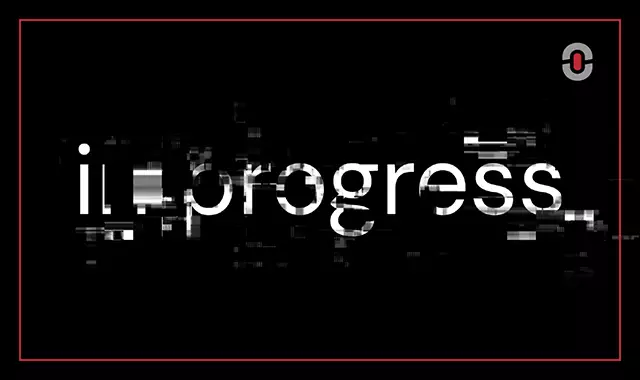AI-powered translation has transformed the speed and scale of global communication. With tools like Google Translate, DeepL, and Microsoft Translator, companies can translate thousands of words in seconds. But there’s a catch: machine translation isn’t as neutral or objective as it seems.
Behind the lightning-fast output and seemingly fluent results, hidden biases can creep in—subtle distortions shaped by data, design, and assumptions. These aren’t just technical glitches—they can lead to gender stereotyping, cultural misrepresentation, and even serious reputational risks.
This article explores what hidden biases in AI translation really are, where they come from, and why human review remains an irreplaceable safeguard in any professional translation workflow.
What Are Hidden Biases in AI Translation?
How AI Learns Language
At the core of every machine translation engine is data—massive datasets containing millions of translated sentences. These are used to “train” neural networks to recognize language patterns, build word associations, and predict accurate translations.
The problem? These datasets are created by humans, and humans are biased.
If the training data overrepresents male job titles, certain cultural narratives, or specific dialects, the AI will learn those patterns as “normal.” As a result, even the most advanced neural machine translation (NMT) systems can reproduce and reinforce societal stereotypes.
Where Bias Comes From (and Why It’s Dangerous)
Bias in machine translation can originate from:
- Imbalanced training data;
- Socio-cultural assumptions embedded in language pairs;
- Pre-existing bias in original source content;
- Lack of diverse linguistic or cultural perspectives.
In real-world terms, this might mean automatically translating “doctor” as male and “nurse” as female. Or misinterpreting religious terms, national identity, or political references in ways that reflect dominant cultural viewpoints—often marginalizing others in the process.
And in industries like law, healthcare, or government communication, these biases aren’t just inappropriate—they’re dangerous.
Real-World Examples of Bias in Machine Translation
Gender Bias and Stereotypes
One of the most studied forms of AI translation bias is gender stereotyping. In many languages, pronouns are gender-neutral. But when translated into gendered languages like English or German, AI systems often assign roles based on assumptions.
For example:
- Turkish “O bir doktor” (They are a doctor) is often translated as “He is a doctor”;
- “O bir hemşire” (They are a nurse) becomes “She is a nurse”.
This bias reinforces harmful cultural stereotypes and raises serious questions about fairness and inclusivity—especially in public-facing communication or educational content.
Cultural Misrepresentation and Context Loss
Beyond gender, AI translation can distort meaning in cross-cultural contexts. Idioms, metaphors, humor, and culturally specific references often lose their meaning—or worse, become offensive—when translated literally.
Example:
A Japanese expression used to humbly decline an invitation could be translated by AI as a flat “No,” which in Japanese culture would be considered harsh and inappropriate.
Or consider political terms: translating “freedom fighter” from one language might become “terrorist” in another, depending on how the training data was skewed. These aren’t just errors—they reflect deep cultural biases.
Why Human Review Still Matters
Linguistic Judgment and Ethical Oversight
Human linguists bring more than just language skills—they bring judgment. A professional translator can recognize when a sentence doesn’t just sound “off” but carries a problematic subtext.
They can:
- Adjust gendered phrasing based on context;
- Rephrase idioms to preserve tone and intent;
- Flag culturally sensitive terminology;
- Ensure legal and ethical accuracy.
AI might be fast, but it doesn’t understand consequence. Only a human can assess whether a translation is appropriate for a particular audience or situation.
Cultural Sensitivity and Local Relevance
A well-trained translator knows the difference between literal accuracy and cultural effectiveness. They can localize content in ways that feel authentic to the target audience—something AI simply can’t do without guidance.
This is especially critical in marketing, education, and political messaging. When tone, humor, or emotion are involved, it’s not enough for a translation to be correct—it must also feel right.
Best Practices to Minimize Bias in AI-Assisted Translation
Train with Diverse, Inclusive Data
Translation companies and AI developers must use datasets that reflect a wide range of voices, identities, and language styles. This means including:
- Balanced gender representation;
- Varied dialects and regional language forms;
- Culturally diverse and inclusive content;
- Sensitive topics from multiple perspectives.
By diversifying input, we reduce the risk of skewed output.
Implement Human-in-the-Loop Models
The most effective AI translation strategies don’t eliminate humans—they center them. This is called a human-in-the-loop workflow.
It means:
- AI generates the initial draft;
- Human translators review and revise for bias, accuracy, and tone;
- Final QA checks ensure compliance with ethical and cultural standards.
This workflow balances efficiency and responsibility, allowing teams to move faster without sacrificing quality.
Empower Translators to Flag and Fix Bias
Many linguists feel pressure to “just correct and move on.” But companies should encourage translators to document recurring bias patterns, so they can be addressed at the system level.
- Improve future output;
- Educate project managers and clients;
- Build a culture of critical thinking and accountability.
Bias isn’t just a software issue—it’s a human responsibility. And that means fostering collaboration between linguists, developers, and decision-makers.
Conclusion: Speed Doesn’t Equal Sensitivity
AI translation is here to stay—and for good reason. It offers speed, scalability, and cost efficiency that traditional workflows can’t match. But speed can’t come at the cost of fairness, representation, or cultural nuance.
Bias in machine translation isn’t always obvious. That’s what makes it dangerous.
It slips in quietly—shaping perceptions, reinforcing stereotypes, and influencing audiences in subtle but meaningful ways. Which is why human review is not just a “nice-to-have”—it’s a must-have.
At 1-StopAsia, we believe the future of translation isn’t about choosing between humans and machines—it’s about building smarter, more ethical workflows where each plays its role.
Because in the end, words aren’t just tools—they’re reflections of people, cultures, and truths. And getting them right still requires the one thing no machine can replicate: human insight.
Business Risks of Ignoring AI Translation Bias
Biases in machine translation don’t just pose ethical concerns—they create real-world business risks. When left unchecked, they can damage customer trust, provoke public backlash, or lead to legal liability.
Imagine this:
A global brand launches a marketing campaign in multiple languages. The AI-generated Spanish version reinforces gender stereotypes by assigning “CEO” as male and “assistant” as female. This doesn’t just alienate a segment of the audience—it sparks criticism on social media and harms the brand’s image as inclusive and forward-thinking.
Or consider a healthcare app using AI translation for symptom checkers. A mistranslated phrase could cause confusion about dosage instructions or risk categories, potentially endangering lives.
The bottom line? Companies can no longer afford to treat machine output as final. The reputational cost of biased, tone-deaf, or inaccurate translations is simply too high.
How Translation Agencies Can Lead the Change
Translation companies are uniquely positioned to take the lead on ethical AI practices. Here’s how:
1. Embed cultural reviewers into workflows
Don’t wait until content is “finished” to check for issues. Have cultural and linguistic reviewers involved during development, especially when content touches on identity, politics, religion, or social topics.
2. Create a feedback loop between linguists and tech teams
Encourage translators to log bias incidents and unusual patterns. Share this data with developers or platform providers to improve AI systems over time.
3. Use bias-aware glossaries and termbases
Build internal databases that avoid gendered assumptions or culturally outdated phrasing. For instance, use neutral job titles or localized equivalents that reflect the audience’s values.
4. Educate clients on the role of human oversight
Many clients don’t fully understand the limits of AI. Take the time to explain why machine translation is a draft—not a deliverable—and why investing in review is worth it.
Reinforcing the Human Element
As translation professionals, our role isn’t shrinking—it’s evolving. Instead of being replaced by machines, linguists are becoming curators of context, ambassadors of culture, and final guardians of meaning.
AI can get us 80% of the way there. But the last 20%—the part that makes language truly connect—still belongs to humans. It’s in the way we interpret nuance, judge tone, and understand people beyond the words on the page.
That’s not just workflow optimization—it’s human communication done right.

